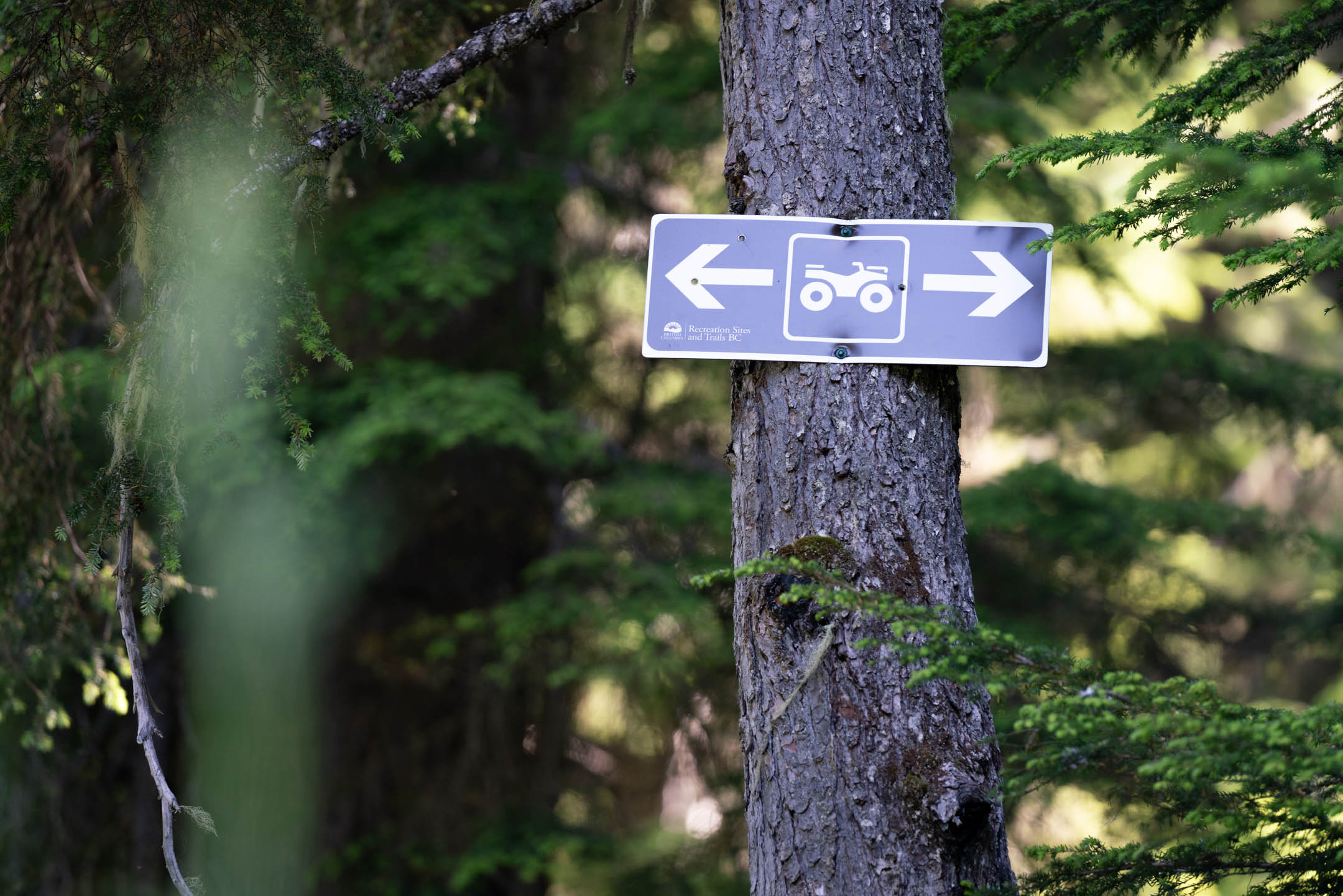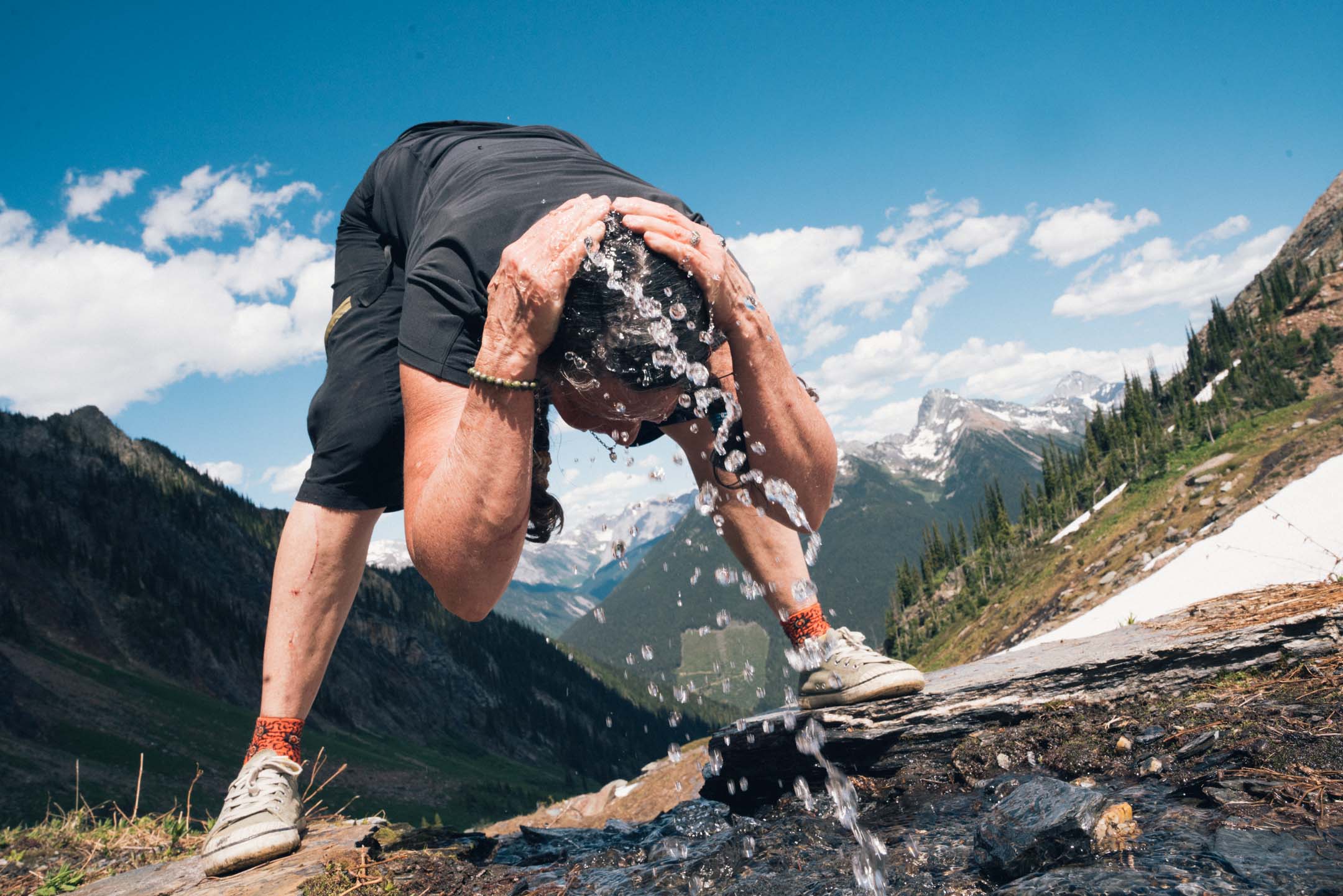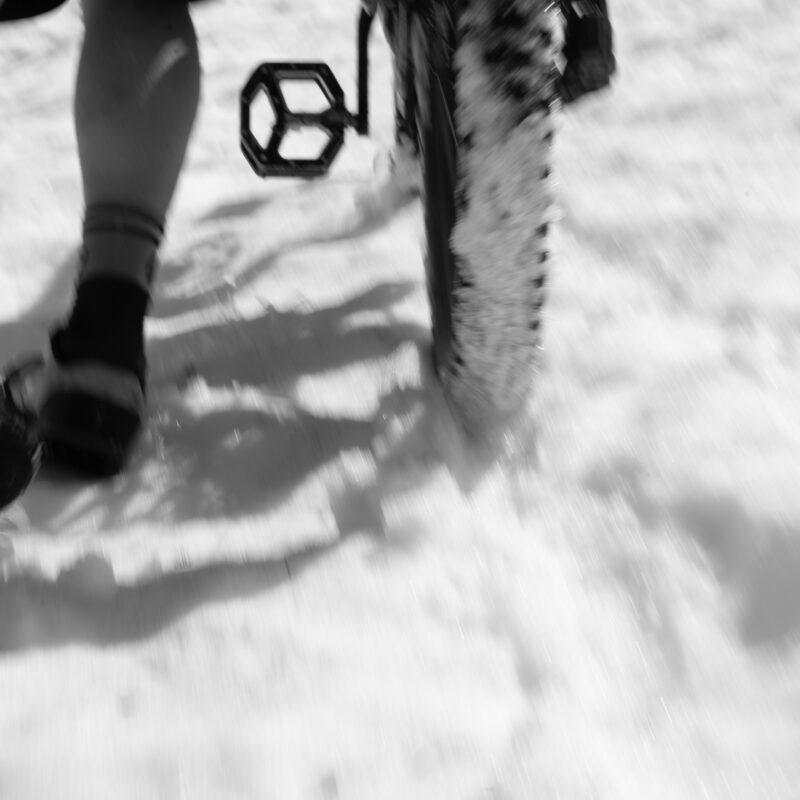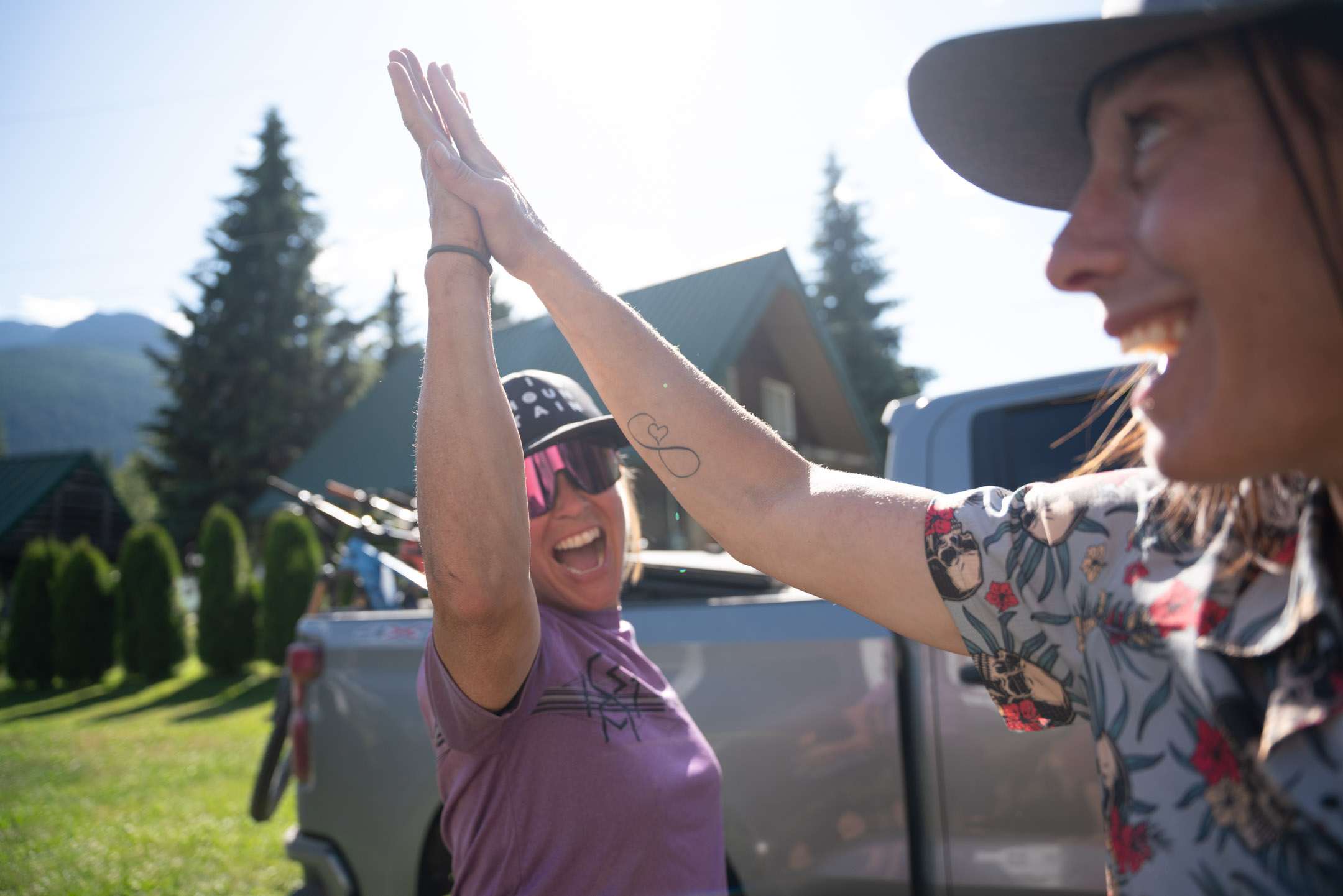Circle of Silver: Perseverance
Words By: Elladee Brown
Images By: Anne Keller
The Triune Mine near Trout Lake, 45 minutes northeast past the ghost town hamlet of Ferguson, hasn’t been operational for over 75 years.
The trail has become a relic…a double–track overgrown steep access road that, these days, only sees occasional recreational use. This would be the perfect opportunity for our crew to test logistics, bikes and batteries before we tackled the entirety of our main mission, the Silvercup Ridge Trail.
From 1901 to 1904, Triune produced a total of 400 tonnes of ore. That might seem like a lot, but for modern day’s sake, it’s just one single ultra truck load in a current day mining operation. It fired up again a couple of decades later, but then eventually shut down for good when cost and access no longer made sense. And when you see this place in person you understand why. The lure of finding gold was strong, it had to be. The historical images of pack trains trudging up this mountain are self-explanatory.
Back then, at the turn of the century, everything produced in these mines was hand chucked and minimally mechanized.
Winter camps were set up on location near the mine shafts, and conditions were grueling. Some of the deepest snow in all of Canada falls within these mountains, the Selkirk range.
On that Friday in mid-July, we loaded the eMTBs into two trucks and headed east from our base at the Windsor Hotel in Trout Lake. For about an hour we followed a network of forest service roads to the bottom of the Triune Mine trail. Jen, Anne, Kim, Larry, myself and our logistics crew – Jen, Brenda and Charity, all headed out for the trial run. The plan was to start the ride together, and based on everyone’s comfort level on the ascent, we’d decide who’d keep going and who would turn back. We always respect the ‘buddy system’ out here in the BC backcountry, meaning no one rides alone. If one person goes back, another joins them. Whether it’s grizzly bears, mechanical misfortune or a ‘biomechanical’ – there’s always a buddy on hand.
The map's tightly packed contour lines promised a climb,
but we figured it'd be doable –
after all, it was double track, and we had electric assist – so how hard could it be? When we arrived to the turn off to Triune, we quickly realized that vehicle access was over. Water bars at least six feet deep made further truck travel impossible. We parked and pulled off to the side of the road. There’s hardly a soul around these parts, but it’s obviously common courtesy to leave ample space for drive by ‘traffic’. We unloaded bikes off the tailgate, did a final gear check, and started the climb up the road that would take us deeper into the valley to the base of the Triune ascent. The ride to the mine was an out and back, a little less than 3 miles, but over 3000ft of elevation gain.

The start was smooth sailing minus the water bars –
easy going along a hard-packed road with a slight incline that would take us to the start of the double-track.
After a couple kilometres the road started narrowing and getting more aggressive, as the contour lines had promised. The alders were closing in and the ground surface increased in difficultly by the minute. Charity was reaching the limits of her comfort zone, so her and Jen made the decision to head back to the trucks and drive back to the Windsor in Trout Lake, leaving us one vehicle for our return later in the day.
Our crew of five forged upwards through the rough double track that, at times, spit us off our bikes forcing us to push through the loose rocky terrain. Boost mode was essential but tricky; maintaining traction and enough speed was a balancing act of bike handling and focus as we bobbled around the trail trying not to fall over or spin out. Even walk mode is challenging to use in this uneven, snarly terrain. Pushing eMTB’s up impossibly steep climbs can be exhausting – it’s motivation to stay on your bike as long as you possibly can. We’d cheer each other on as we’d fall off and get back on again, some of us forced to push, others barely making it up the chute-like alder tunnels.
The alders subsided
as we climbed further into subalpine terrain giving us incredible views of Triune Mountain in front of us, and the Purcells behind with the bench cut road we’d traverse to get to the top slowly coming into view. We could feel the air getting cooler as we climbed higher, the chunky rocks more plentiful, and the views more grandiose.
Starting and stopping often to catch our breath and rest our bodies, we finally made it to where Triune Creek meets the doubletrack – a flat spot at the bottom of the basin that leads to Triune Mountain. Alpine flowers and freshwater flow from the glacier to the valley floor below. It was time to take in the view and splash some ice-cold water on our sweaty faces before making a final push to the mine shaft.


The trail from here was mostly snowed in
with just a strip of semi rideable trail on the open face of the rocky side slope. We knew the shaft, or ‘adit’ as they’re called, was somewhere near the top of the trail, but the crags and black rock made any openings impossible to see from where we were standing below. Larry and I decided to ride and push our bikes up the narrow strip of trail, while the rest of the group kept going on foot, scrambling up the scree fields on all fours.
Before long,
Larry and I also dropped the bikes and started to scramble. Now all five of us were scattered in different spots on the hillside, hoping to see the opening of the shaft as we gained elevation. Anne had torn her achilles heel 8 months earlier, and the sheer steepness of the terrain was throwing her into antagonizing pain. Her and Jen decided to stay put, while the rest of us continued to hoof upwards.
We finally had some visuals of a plateau on the side of the mountain that looked to be the opening of the mine. We crossed the sketchy scree slope to a flat spot and climbed a short brittle rope that took us to the opening. How anyone would make this trip 125 years ago to dig for gold was beyond us.
The opening to the adit was about 6 ft in height, 4 ft in width - the entrance looked dark and ominous on this beautiful bluebird day.
Peering in with our lights we could see the rails and an old ore cart sitting near the entrance. We cautiously stepped inside and slowly, one step at a time, went deeper in. We all stopped in a line after about 20 ft, but Brenda, totally unafraid, trudged on further, alone. We could hear her footsteps in the shallow water on the floor of the shaft, commenting on her visuals as she went further inside. She came to a fork in the shaft, with a huge boulder mostly blocking the way, this is where she made the decision to turn around and join us back at the opening.
Physically being here,
we were all stunned by the location of this mine, by far the most difficult to access in the region, eMTB’s included. At almost 8000 ft elevation, it’s no wonder this mine was eventually abandoned, it’s small tram system frequently damaged by avalanches, and economically no longer making sense.
After taking in the views, we lowered ourselves down the frayed rope, and back to our bikes. The short but steep rocky descent required all our attention, but we managed to ride every section of the trail all the way to the truck.
Triune turned out to be the perfect test mission -
it showed us we’d need to break up our main mission, the Silvercup Trail, into two days instead of one. The gradient and ground cover in this area required more battery power than we initially thought, so we started making plans for how we’d follow in the footsteps of Alice over the next couple of days.
Stay tuned for our story of the longest ridge ride in the Kootenays, the Silvercup Trail, on the backside of Triune…
